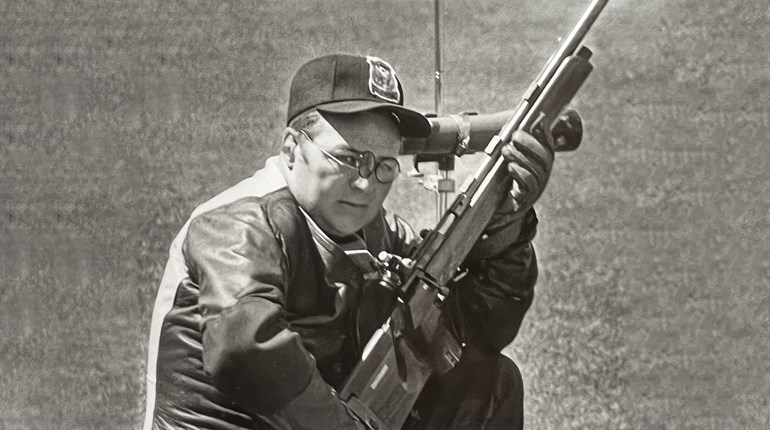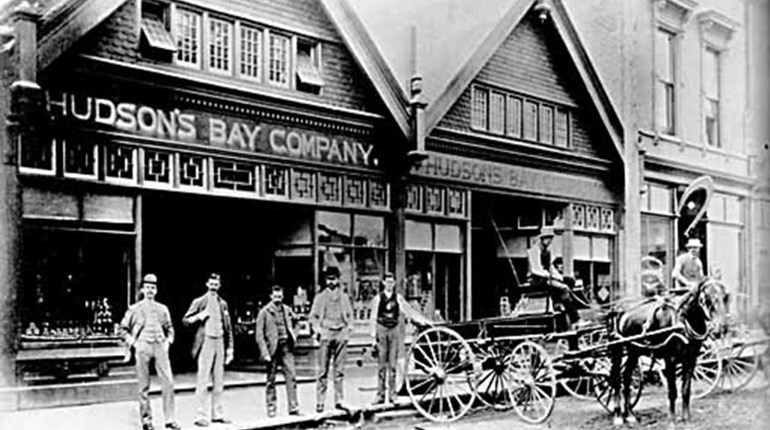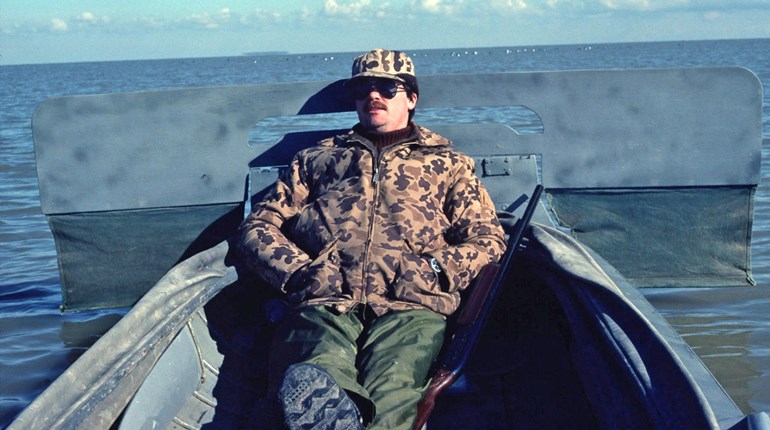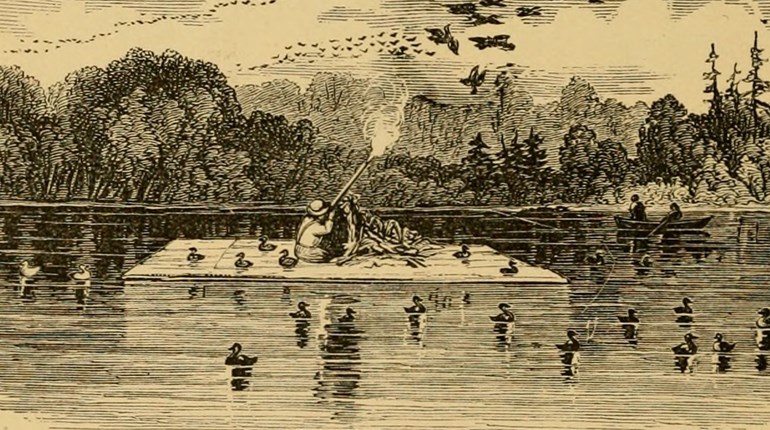
During the late 1700s on the American frontier, there was no more valuable commodity than salt. Without it, pioneers and settlers had no way of preserving the many pounds of meat provided by the large game animals—white-tailed deer, black bears, elk and buffalo—roaming the wilderness. In essence, a frontier fort without an adequate supply of salted meat was vulnerable to siege by native Americans, which could last for weeks.
In the winter of 1778, Boonesborough, located in Kentucky and named for the famous frontiersman Daniel Boone, was running critically low on salt. So it was that in early February, despite the cold, unpredictable weather and 6" of snow on the ground, Boone led 26 men from the fort to the Lower Blue Licks to make salt. A laborious, time-consuming job, it took the boiling of many gallons of the brackish water to produce just one gallon of salt. The plan was for Boone to hunt the area near the licks to provide the meat, while the men produced the salt.
Winter was usually the time of year when the threat of Indian attack was lowest. But as Boone was hunting one day, he suddenly found himself surrounded by four Shawnees who quickly took him captive and marched him to their nearby camp of 120 warriors. Their leader, Black Fish, was very pleased to have this well-known Long Knife now under his control. Black Fish informed Boone that he and his war party were on their way to attack Boonesborough and kill all its inhabitants in retribution for the recent murder by settlers of the Shawnee chief Cornstalk.
At dawn the next day, February 8, in an attempt to head off the mass execution of his men and the subsequent attack on Boonesborough, Boone agreed to surrender himself and his 26 unsuspecting salt makers to the Indians. Bound and under heavy guard, Boone led Black Fish to the salt makers while the remainder of Indians surrounded the salt camp. As the salt makers began seeing Indians approaching and ran for their guns, Boone shouted to his men, “Don’t shoot! If you do, we’ll all be killed!” The men had no choice but to lay down their flintlocks.
But Black Fish was having second thoughts. Maybe he should take the scalps of these men and then move on to Boonesborough as planned. After all, Boonesborough was thought to be only lightly defended and could easily be taken. Thinking quickly, Boone made this impassioned plea to the Shawnee chief.
“Brothers… You have got all my young men; to kill them, as has been suggested, would displease the Great Spirit, and you could not then expect future success in hunting nor war. If you spare them, they will make you fine warriors, and excellent hunters to kill game for your squaws and children. I now appeal both to your honor and your humanity, spare them, and the Great Spirit will smile upon you.”
Thankfully, Boone’s plea worked. The Indians decided to take Boone and his men captive and forego attacking Boonesborough, at least for now. But before heading the captives north across the Ohio River to the main Indian town of Chillicothe, Black Fish declared that Boone must run a gauntlet. Hearing that, the 120 warriors began yipping and howling in anticipation, while simultaneously arming themselves with war clubs, tomahawks, rifle ramrods or any other object that could be used to strike an enemy. They then formed two parallel lines, spaced 5 to six 6 apart, and facing one another.
The so-called “rules” of the gauntlet run were simple. Unarmed and stripped to the waist, Boone was to run between the two lines of Indians as fast as he could, while the warriors attempted to strike him with their weapons. But no Indian was allowed to hit the prisoner from the front as he approached, only on the back of his body as he passed, anywhere from the back of his head to his heels. If he fell during his run, Black Fish warned Boone, the frontiersman would be beaten to death on the spot.
Boone did not need to hear anything more. Rushing past by the first few warriors in the gauntlet line before they knew it, he then began veering side to side, zigzagging to avoid as many blows as possible. Daniel certainly took some heavy hits, but staggered on until there was only one Indian left in front of him, described as a “broad, squatty fellow.” More angry now than seriously hurt, Boone simply lowered his head and head-butted the last Indian in the stomach as he ran him over. This caused Black Fish and the other Shawnees to break out in loud, raucous laughter. Daniel Boone, they decided, was indeed a great warrior.
Over the next few months, Black Fish and his wife became so impressed with Boone that they officially adopted him into their family and the Shawnee tribe, naming the frontiersman Sheltowee, Big Turtle. Boone played along, but always with the thought in the back of his mind of one day escaping and returning to Boonesborough. However, he knew he would only have one chance. If an adopted settler was caught trying to escape, it meant certain torture and an agonizing death at the stake.
Boone took his chance during the month of May. Sent on an errand to round up horses, he chose what looked to be the fastest one, jumped on its back and kept going, arriving in Boonesborough on June 7. However, he was not the first of the salt makers to return. Andrew Johnson had also escaped the Indians and made it home a month prior. A third captive, William Hancock, then returned to the fort in July, bringing with him the alarming news that Black Fish and more than 400 warriors were now on their way to attack Boonesborough.
And, as might be surmised, Black Fish was not pleased that his adopted son, Big Turtle, had betrayed him.
The siege of Boonesborough lasted 11 days, the first two days of unsuccessful parley leading to nine days of battle. Yet even though the odds hugely favored the Indians, Boone and his men and their families had prepared the fort’s defenses well. They killed 38 Indians during the fighting while losing only two of the fort’s defenders, a stunning victory. Despite all that, rumors of Daniel Boone being a traitor began to swirl, and his official court-martial took place in October at nearby Logan’s Station.
Leading the prosecution was Colonel Richard Callaway, whose two nephews were among the yet-missing salt makers, and he believed that Boone was to blame for it. He said that Boone was alone and 10 miles from camp when he was captured by the Indians, and had surrendered his men to save his own life. Callaway also claimed that while in captivity and taken to Detroit, Boone had struck a bargain with the British “Hair Buyer” Henry Hamilton (so nicknamed because he bought American scalps from the Indians). Callaway concluded by saying that “Boone was in favor of the British…and all his conduct proved it.”
When Boone rose to defend himself, a young Virginian, Daniel Trabue, who had arrived at Logan’s Station that spring, recorded what Boone said.
“Captain Daniel Boone said the reason he gave up these men at the Blue Licks was that the Indians told him they was going to Boonesborough to take the fort. Boone said he would use some stratagem. He thought the fort was in bad order and that the Indians would take it easy. He said he told the Indians the fort was very strong and too many men for them, that he was friendly to them (and the officers at Detroit) and he would go and show them some men—to whit, 26—and he would go with them to Detroit and these men also, and when they come to take Boonesborough they must have more warriors than they now had. Boone said he told them all these tales to fool them.”
The jury was not long in deciding the verdict. They not only found Daniel Boone not guilty, but also promoted him to Major of the militia. Kentuckians debated the merits of the case for years. Always sensitive to criticism, Boone was deeply offended by the trial and having his loyalty to Kentucky and the American cause questioned. As a result, Daniel Boone eventually moved his family to Missouri in 1799, vowing never again to return to Kentucky. And he never did.
At least not until he died (September 26, 1820) and his body, along with that of his wife’s, Rebecca, were exhumed and returned to the Bluegrass State in 1845. Still celebrated yet today as frontier heroes, their graves are located at the Frankfort Cemetery in Frankfort, Kentucky.







































